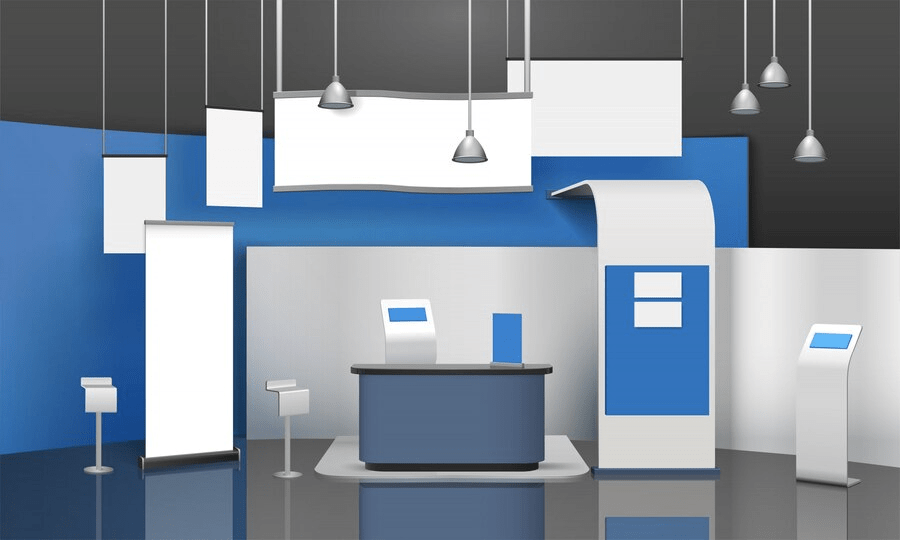Event stalls serve as powerful platforms for businesses and organizations to showcase their products, services, and ideas at trade shows, exhibitions, and various events. However, the success of your participation often hinges on the meticulous planning and execution of your event stall installation. In this blog, we’ll guide you through the essential steps to plan and execute a successful event stall installation that not only looks impressive but also achieves your objectives.
Step 1: Define Your Objectives and Budget
Before diving into the technical aspects of event stall fabrication and installation, it’s crucial to establish clear objectives and a budget. Determine what you want to achieve with your stall – brand awareness, lead generation, sales, or something else entirely. Your objectives will influence many decisions throughout the process.
Once your objectives are in place, set a budget that aligns with your goals. Consider all costs, including design, materials, labor, and promotional materials. Having a well-defined budget will help you make informed choices during fabrication and installation.
Step 2: Hire a Professional Fabrication Team
Event stall fabrication requires expertise and precision. It’s best to hire a professional event stall design company with experience in creating event stalls. Look for a team that understands your objectives and can bring your vision to life. Ensure they have a track record of delivering high-quality stalls on time and within budget.
Step 3: Collaborative Design
Work closely with your fabrication team to develop a stall design that not only aligns with your brand but also serves your objectives. Consider factors like layout, branding elements, signage, lighting, and interactive features. A well-thought-out design can make your stall stand out in a crowded event space.
Step 4: Materials Selection
The choice of materials plays a significant role in the durability and aesthetics of your event stall. Discuss material options with your fabrication team, considering factors like cost, weight, and visual appeal. Opt for materials that are both durable and visually appealing.
Step 5: Plan for Logistics
Proper logistical planning is crucial for a smooth installation process. Determine the event’s schedule, including load-in and load-out times. Coordinate with event organizers to secure a convenient time slot for installation. Create a detailed checklist of all the materials, tools, and equipment needed for installation.
Step 6: Pre-Installation Setup
Before arriving at the event venue, ensure that all components of your event stall are in perfect condition. This includes checking signage, lighting, branding materials, and any technology or interactive elements. Properly organize and label all components to streamline the installation process.
Step 7: On-Site Installation
On the day of the event, arrive at the venue with your fabrication team and all necessary equipment. Follow your installation plan meticulously, and communicate effectively with your team to ensure everything aligns with the design.
Safety is paramount during installation. Ensure that all safety guidelines are followed, especially when working with heavy equipment or rigging. Keep the event space organized to avoid accidents and delays.
Step 8: Quality Control and Testing
After the installation is complete, perform a thorough quality check. Test all lighting, technology, and interactive elements to ensure they function correctly. Walk through the stall to check for any visible flaws or issues that need immediate attention.
Step 9: Training and Staff Briefing
If your event stall includes interactive elements or product demonstrations, make sure your staff is trained and briefed on how to operate them. Staff should also be knowledgeable about your products or services and prepared to engage with event attendees effectively.
Step 10: Promotional Strategy
Your event stall installation is only part of the equation. To maximize its impact, have a clear promotional strategy in place. Utilize social media, email marketing, and other channels to generate buzz about your presence at the event. Consider offering special promotions or incentives to attract visitors to your stall.
Conclusion
A successful event stall installation requires careful planning, collaboration with experts, attention to detail, and a clear focus on your objectives. By following these steps and maintaining a strategic approach, you can create an event stall that not only impresses attendees but also helps you achieve your goals at trade shows, exhibitions, and other events. Remember that a well-executed installation can leave a lasting impression and lead to valuable opportunities for your business or organization.










